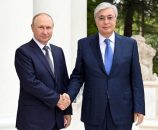China Pakistan Economic Corridor (CPEC) is making inroads in macro-economy of the country. The iron clad friendship is making the progress of this mega project steady despite recent economic difficulties.
In this connection, China has rolled over $2 billion loan in safe deposits for cash-strapped Pakistan’s economy amid dwindling foreign exchange reserves.
China has rolled over three SAFE deposits. The first deposit of $500 million was due on June 27, 2022, the second $500 million matured on June 29, 2022 and the third $1 billion was due on July 23, 2022. China’s State Administration Foreign Exchange (SAFE) deposits of $2 billion have been rolled over for one year,” a top official of the Finance Division confirmed while talking to The News here on Wednesday.
So far in totality, China has rolled over a $4.3 billion loan, including $2.3 billion in commercial loans. It is a good omen for the economy of Pakistan and it further facilitates easy and smooth sailing of numerous projects under the flagship of CPEC in the country.
Another energy project under CPEC has been commenced. The 330MW Thar Energy Limited Power Plant (TEL), a mine-mouth lignite-fired power plant at Thar Coal Block II, has been successfully synchronized with the National Grid. Definitely it will reduce energy deficit in the country and it will also reduce energy import bill.
Most recently, Chief Minister Sindh Syed Murad Ali Shah, in the presence of HUBCO officials and their local and Chinese partners, clicked the computerized control system, which is a significant development to add 330MW uninterrupted electricity to the National Grid.
Murad Ali Shah was of the opinion that Thar Coal has brought a positive change in the life of local people by creating employment, education, and medical facilities.
The Project is a joint venture among Hub Power Company Limited (HUBCO), Fauji Fertilizer Company Limited (FFC), and China Machinery Engineering Corporation (CMEC), which is also the EPC contractor.
The foreign financing for the Project was arranged via a Chinese syndicate led by China Development Bank whereas the local financing has been arranged via a syndicate led by Habib Bank Limited.
The project started construction in May 2018 from the sponsor’s equity to ensure a timely Commercial Operation Date (COD) and early utilisation of the local resources. The financial close of the project was achieved in January 2020.
Now, the project has successfully reached its commissioning phase and COD is expected by the end of this month. The Thar Energy Limited Plant utilizes indigenous Thar coal sourced by Sindh Engro Coal Mining Company (SECMC), a joint venture initiative of which HUBCO is also a shareholder. The utilization of indigenous fuel is a development that will further revolutionize the Pakistani energy sector.
It has multiplier effects. It will enable the nation to become proficient in supporting its own energy needs through local resources rather than allocating funds to import fuel, which will significantly decrease the country’s import bill
The TEL power plant has created numerous direct employment opportunities for the locals of Thar and adjoining communities. TEL and Thal Nova (another venture between HUBCO, Thal Limited, Novatex, CMEC, and Descon) have jointly employed over 3,700 locals for the construction.
TEL is the first coal-fired power plant in the country to be run entirely by the Pakistani workforce. Similarly, the Thal Nova power plant is also near completion. Collectively, these two power plants will provide 660 MWs of affordable and indigenous electricity.
The TEL power plant has created numerous direct employment opportunities for the locals of Thar and adjoining communities. TEL and Thal Nova (another venture between HUBCO, Thal Limited, Novatex, CMEC, and Descon) have jointly employed over 3,700 locals for the construction.
TEL is the first coal-fired power plant in the country to be run entirely by the Pakistani workforce. Similarly, the Thal Nova power plant is also near completion. Collectively, these two power plants will provide 660 MWs of affordable and indigenous electricity.
On the other hand, the Chinese Ambassador to Pakistan Nong Rong met with Federal Minister for Board of Investment (BOI), China Affairs & Special Initiatives Chaudhry Salik Hussain. Secretary BOI Asad Rehman Gillani, Additional Secretary BOI Khashih Rehman, and Project Director, CPEC-ICDP Asim Ayub also participated.
The Chinese Ambassador highlighted the need for enhancing the business-to-business and people-to-people exchanges on the backdrop of the CPEC IC Framework Agreement and Long-Term Plan, thereby promoting the industrial relocation of China to Pakistan and ensuring the success of the second phase of CPEC.
On his part, the Federal Minister expressed that Ambassador Nong Rong may continue referring the Chinese investors to BOI. “BOI being the first point of contact for the investors will leave no stone unturned to facilitate and welcome our Chinese brothers in Pakistan,” Mr Hussain said.
Chaudhary Salik Hussain said that he has been personally interacting with the Chinese investors on a frequent basis and assured the ambassador that he will continue to personally step in to address the grievances and issues of the Chinese companies referred by the Chinese Ambassador.
Secretary BOI Asad Rehman Gillani said that renewed efforts to enhance industrial cooperation were the need of the hour and for this purpose, a team of PMU on CPEC-IC has been devised for taking on board local chambers and private stakeholders pertaining to both the Pakistani and Chinese businesses operating within and outside Pakistan, and extend the government’s full support for ensuring JVs and cooperation between companies of both countries. Chinese Consulates in Lahore and Karachi have also joined hands and would be working vigorously to ensure industrial relocation and cooperation with China.
To conclude, China Pakistan Economic Corridor (CPEC) has further consolidated iron-clad friendship and has further strengthened socio-economic integration, massive industrialization, energy production(renewables), agricultural cooperation and last but not least, infrastructural development.
It is need of the hour that an productive and participatory model should be introduced in the CPEC Phase-II for the completion of numerous mega projects by involving the private sectors of both countries.
- Latest
- Trending






